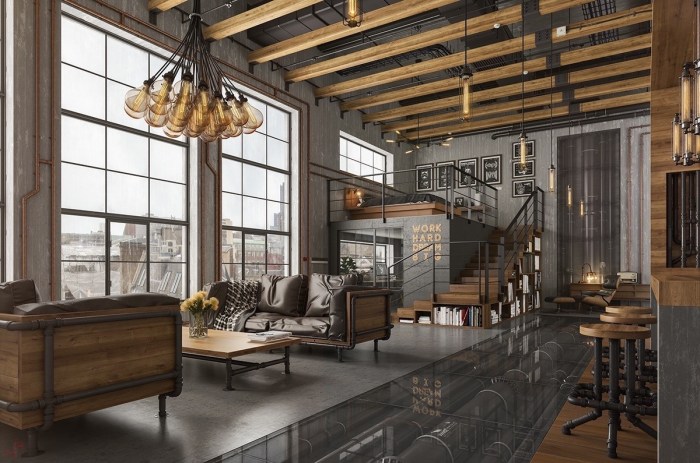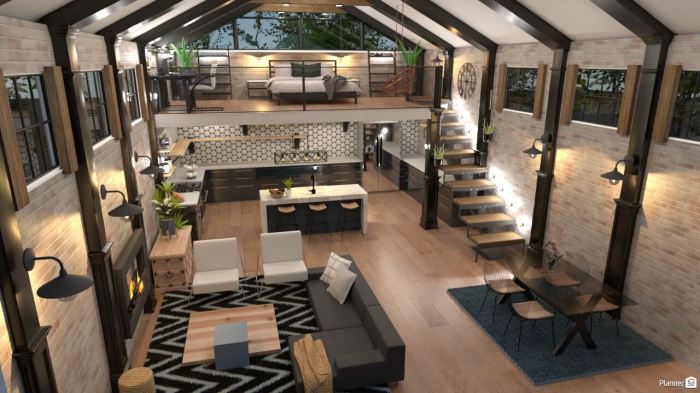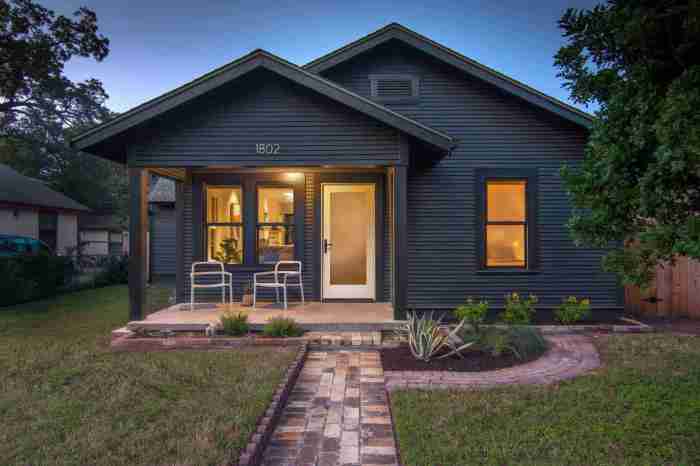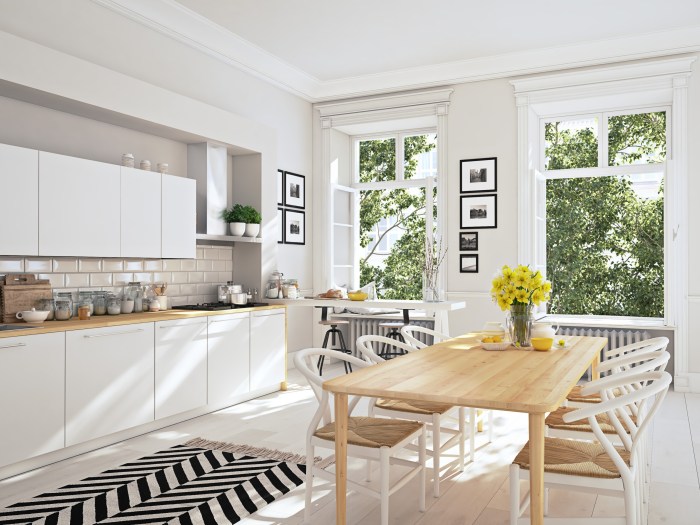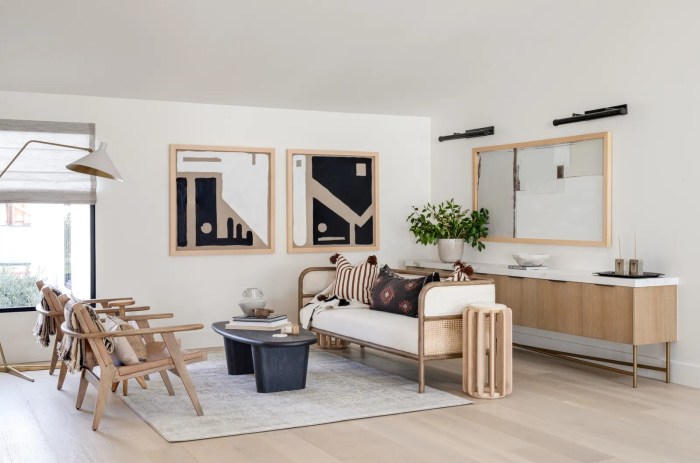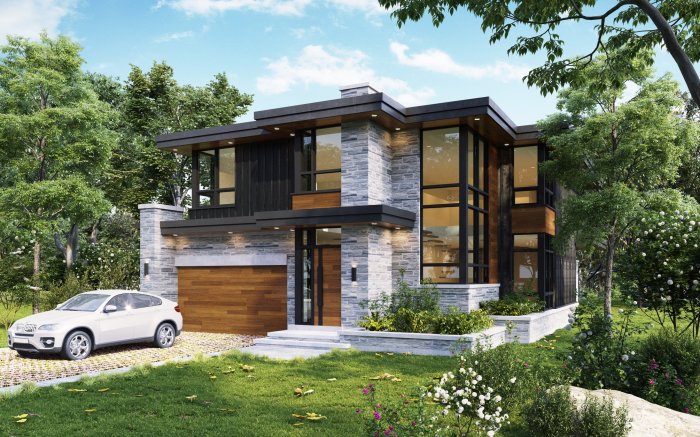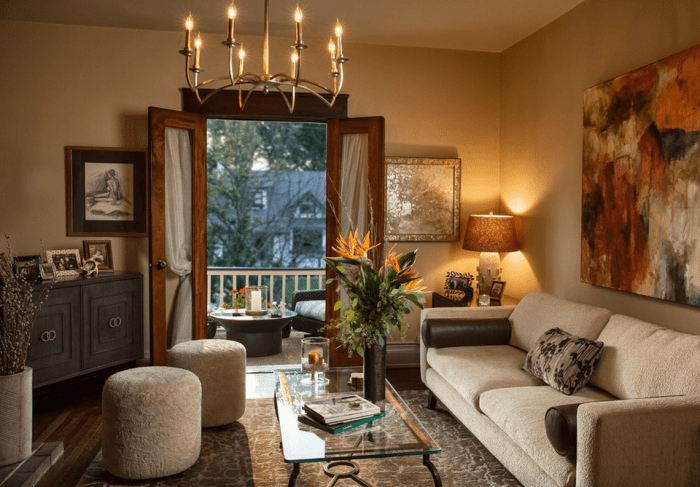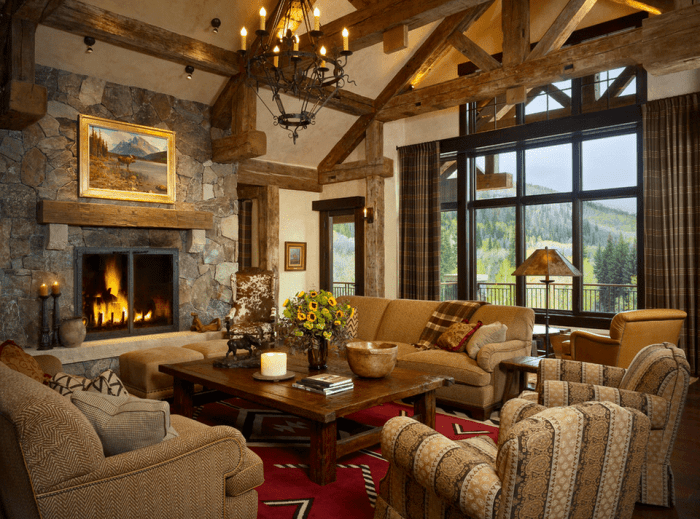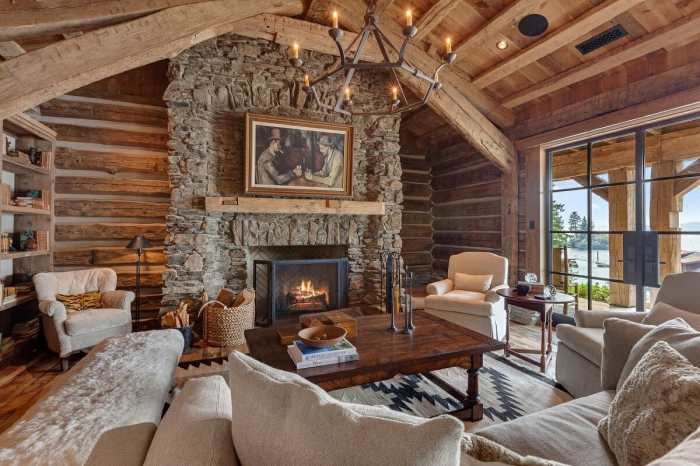How to Design a Minimalist The allure of minimalist design lies in its ability to transform living spaces into havens of calm and functionality. By stripping away the superfluous, we uncover the essence of design: a harmonious blend of form and function, where each element serves a purpose, contributing to a sense of serenity and spaciousness. This exploration delves into the core principles of minimalist home design, guiding you through space planning, material selection, and the incorporation of personal touches, all while emphasizing sustainable and budget-friendly practices.
We’ll uncover the scientific basis behind the calming effects of neutral palettes and the psychological impact of uncluttered environments.
Minimalism, far from being austere, offers a pathway to intentional living. It’s a design philosophy grounded in careful consideration, prioritizing quality over quantity, and creating spaces that reflect the occupant’s personality without succumbing to visual chaos. This process involves understanding the interplay of light, color, and texture to create an atmosphere that fosters well-being and productivity. We will examine how these elements work together to create a space that is both aesthetically pleasing and deeply functional, drawing on principles of environmental psychology and design theory.
Defining Minimalist Design Principles
Minimalist home design, a reaction against excessive ornamentation and clutter, prioritizes functionality and simplicity. It’s a philosophy that extends beyond mere aesthetics, impacting how we live and interact with our spaces, promoting a sense of calm and intentionality. The core tenets are rooted in a belief that less is more, emphasizing quality over quantity and focusing on essential elements to create a serene and uncluttered environment.Minimalist aesthetics transcend specific architectural styles, finding expression in diverse forms.
The underlying principles remain constant, regardless of whether the structure is a contemporary loft apartment, a traditional farmhouse, or a modern suburban dwelling. The unifying factor is the intentional reduction of visual and physical elements.
Core Tenets of Minimalist Home Design
The foundation of minimalist design rests on several key principles. Firstly, there’s a deliberate reduction of possessions. Only items with practical use or significant sentimental value are retained. Secondly, a neutral color palette is favored, typically featuring shades of white, beige, gray, and black, to create a sense of spaciousness and tranquility. Thirdly, clean lines and simple forms are paramount; avoiding intricate detailing or overly decorative elements.
Finally, functionality is prioritized over aesthetics; each item serves a purpose, contributing to the overall efficiency and ease of use of the space.
Examples of Minimalist Aesthetics Across Architectural Styles
Minimalist principles can be applied to various architectural styles. Consider a traditional Japanese-style home, characterized by its use of natural materials like wood and paper, clean lines, and a focus on natural light. The emphasis on simplicity and functionality aligns perfectly with minimalist ideals. Alternatively, a modern loft apartment, with its high ceilings, open floor plan, and industrial elements, can be beautifully transformed into a minimalist haven through careful selection of furniture and décor.
Even a rustic farmhouse can embody minimalist principles by stripping away unnecessary ornamentation, emphasizing natural textures, and employing a limited color palette.
Design Elements Exemplifying Minimalism
Several design elements are hallmarks of minimalist aesthetics. Clean lines and geometric shapes are fundamental, creating a sense of order and balance. A neutral color palette, often featuring variations of white, beige, gray, and black, forms the backdrop for a minimalist space. Natural materials like wood, stone, and concrete add warmth and texture without overwhelming the design.
Multifunctional furniture, serving multiple purposes, maximizes space efficiency and reduces clutter. Finally, ample natural light is incorporated to create a bright and airy atmosphere.
Differentiating Minimalist Design from Other Styles
While minimalist design shares similarities with other styles, key distinctions exist. Scandinavian design, for example, while also emphasizing simplicity, often incorporates natural materials and warmer, lighter colors than minimalist designs, creating a more cozy and inviting atmosphere. Modern design, on the other hand, focuses on functionality and clean lines but may incorporate bolder colors and more complex forms than a strictly minimalist approach.
Minimalism’s core principle is a radical reduction, stripping away non-essentials to achieve a state of pure functionality and visual serenity, a level of restraint often not found in other design styles.
Space Planning and Functionality
Effective space planning and furniture arrangement are fundamental to achieving a truly minimalist home. By prioritizing functionality and minimizing clutter, we can create environments that are both aesthetically pleasing and highly efficient. This involves a careful consideration of the spatial relationships between furniture pieces and the overall flow of movement within each room. Scientific studies on spatial psychology demonstrate a strong correlation between well-designed spaces and reduced stress levels, improved focus, and enhanced well-being.
Minimalist Living Room Design
A minimalist living room prioritizes open space and uncluttered sightlines. Imagine a space with a light-colored, neutral palette, maximizing natural light. A strategically placed sofa, perhaps a modular design allowing for flexible configuration, serves as the central element. A low, simple coffee table, ideally with storage underneath, provides a practical surface. The addition of a floor lamp and a few carefully selected pieces of art completes the arrangement.
This arrangement maximizes the sense of spaciousness, while maintaining functionality. The modular sofa allows for adaptation to different social situations, from intimate conversations to larger gatherings. The storage in the coffee table helps keep remotes, books, and other small items organized and out of sight. This design emphasizes the importance of careful selection over quantity.
Furniture Placement Strategies for a Minimalist Bedroom
The minimalist bedroom focuses on creating a sanctuary for relaxation and efficient sleep. The placement of the bed is paramount. Positioning it away from direct sunlight and disruptive noises, ideally against a wall, maximizes restful sleep. A simple bedside table, containing only essential items such as a lamp and a book, is placed within easy reach. Avoid overcrowding the space with unnecessary furniture.
A well-placed mirror can visually enlarge the room, while a strategically positioned wardrobe, preferably built-in, maximizes storage capacity without cluttering the visual landscape. This promotes an atmosphere conducive to rest and rejuvenation, aligning with principles of sleep hygiene supported by sleep science.
Essential Furniture for a Minimalist Kitchen
A minimalist kitchen emphasizes multi-purpose items and efficient workflows. Essential pieces include a large, central island or countertop providing ample workspace and storage. Consider a built-in oven and microwave, integrating seamlessly into the cabinetry. A simple, sleek set of cabinets, with integrated storage solutions, stores all necessary kitchenware. A minimalist kitchen avoids unnecessary appliances, focusing on quality over quantity.
For example, a single, high-quality chef’s knife replaces a multitude of specialized knives, streamlining cooking tasks and reducing visual clutter. This approach is supported by principles of lean manufacturing, emphasizing efficiency and reducing waste.
Storage Solutions for a Minimalist Bathroom
Maintaining a clutter-free minimalist bathroom requires thoughtful storage solutions. Built-in shelving or cabinets maximize vertical space, keeping toiletries and towels organized and concealed. Consider using clear containers to store items, promoting visual order and easy access. A wall-mounted medicine cabinet optimizes space and provides a dedicated location for frequently used items. A small, well-designed vanity with drawers provides ample storage for toiletries and personal items.
This approach reduces visual clutter and promotes a sense of calm and serenity, aligning with principles of creating a spa-like environment for relaxation and self-care.
Color Palette and Material Selection
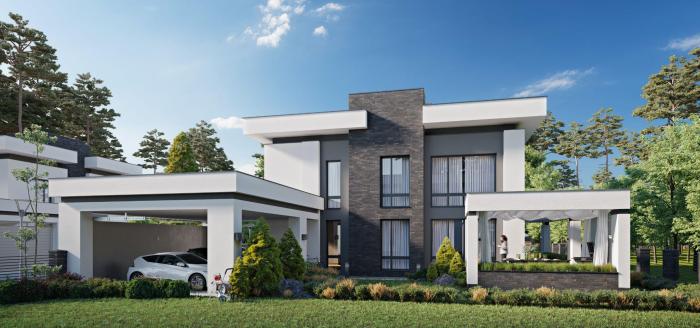
The careful selection of a color palette and materials is paramount in achieving a truly minimalist aesthetic. A minimalist home isn’t simply about removing possessions; it’s about creating a space that is calming, functional, and visually harmonious. The interplay of color and texture significantly contributes to the overall mood and atmosphere of the living space. Scientific studies have shown that color impacts our psychology, affecting mood, productivity, and even sleep quality.
Neutral Color Palettes and Their Psychological Effects
Neutral tones form the cornerstone of minimalist design. Whites, creams, greys, and beiges offer a sense of spaciousness and serenity. White, in particular, reflects light, making rooms appear larger and brighter. However, an all-white palette can feel sterile. Introducing warmer off-whites or creamy shades can add depth and warmth without compromising the minimalist aesthetic.
Grey, with its versatility, can act as a bridge between warm and cool tones, allowing for a balanced and sophisticated feel. The subtle variations in shades within a neutral palette can add visual interest without disrupting the overall sense of calm. For example, a combination of warm white walls, light grey flooring, and beige accents can create a calming and inviting atmosphere, promoting relaxation and reducing stress.
Research suggests that exposure to these muted tones can lower cortisol levels (the stress hormone), leading to a more peaceful environment.
Lighting and Ambiance
The interplay of light and shadow is paramount in minimalist design. A carefully considered lighting scheme isn’t merely functional; it’s a crucial element in shaping the mood, enhancing the perceived spaciousness, and ultimately defining the character of a minimalist home. The strategic use of light, both natural and artificial, can transform a space from sterile to inviting, from energetic to serene, all while maintaining the clean lines and uncluttered aesthetic that defines the style.
Effective lighting in minimalist design hinges on understanding the principles of ambient, task, and accent lighting. Ambient lighting provides overall illumination, task lighting focuses light on specific areas for activities, and accent lighting highlights architectural features or artwork. A balanced combination of these three types is essential for creating a functional and aesthetically pleasing space.
Lighting Design for a Minimalist Dining Area
A minimalist dining area benefits from a layered lighting approach. Ambient lighting can be achieved with recessed ceiling lights, providing a soft, even glow across the space. These lights might be dimmable LED panels, offering control over the intensity. Task lighting, crucial for dining, could be provided by a sleek pendant light directly above the dining table, offering focused illumination for meals and conversation.
The pendant’s minimalist design—perhaps a single, simple geometric shape—should complement the overall aesthetic. Accent lighting could be subtly incorporated with strategically placed LED strip lights under the cabinetry or shelves, adding a touch of drama without disrupting the clean lines.
Incorporating Natural Light in a Minimalist Home
Maximizing natural light is a cornerstone of minimalist design, contributing to both the aesthetic and the well-being of the inhabitants. Large windows, floor-to-ceiling if possible, are key. These should be strategically positioned to allow maximum sunlight penetration throughout the day. Light-colored walls and flooring further enhance the diffusion of natural light, minimizing shadows and creating a sense of spaciousness.
Sheer curtains or blinds, rather than heavy drapes, allow light to filter through while maintaining privacy. Mirrors strategically placed opposite windows can reflect natural light deeper into the room, effectively doubling its impact. This approach not only saves energy but also creates a brighter, more welcoming environment. For example, a minimalist living room with floor-to-ceiling windows facing south will receive abundant natural light throughout the day, significantly reducing the need for artificial lighting.
Using Lighting to Create Different Moods
Lighting’s impact on mood is well-documented; different wavelengths of light affect our circadian rhythms and emotional states. In a minimalist living space, warm-toned lighting (2700-3000K) creates a relaxing atmosphere, perfect for unwinding in the evening. This can be achieved using dimmable LED bulbs in floor lamps or table lamps. Conversely, cooler-toned lighting (5000-6500K) provides a more energetic and stimulating environment, ideal for daytime activities.
This could be achieved with brighter LED ceiling lights or integrated lighting systems. The ability to switch between these lighting temperatures offers flexibility, allowing the space to adapt to various activities and times of day. For instance, a living room might use warm lighting for evening movie nights and cooler lighting for morning yoga sessions.
Types of Light Fixtures Suitable for a Minimalist Home
The selection of light fixtures is crucial in maintaining the minimalist aesthetic. Overly ornate or decorative fixtures are avoided.
The following list details several options:
- Recessed Lighting: Clean, unobtrusive, and provides even ambient lighting. Often uses LED technology for energy efficiency.
- Pendant Lights: Single or clustered, these offer focused task lighting, particularly effective above dining tables or kitchen islands. Minimalist designs often feature simple geometric shapes or sleek, linear forms.
- Track Lighting: Highly versatile, allowing for adjustable light placement to highlight specific areas. The tracks themselves are usually discreet and unobtrusive.
- Floor Lamps: Provide adjustable ambient or task lighting. Minimalist styles feature simple bases and slender shades.
- Table Lamps: Similar to floor lamps, these offer localized illumination for reading or creating a cozy atmosphere. Simple, geometric shapes are preferred.
- LED Strip Lighting: Can be used for accent lighting under cabinets or shelves, adding a subtle glow without visual clutter.
Incorporating Personal Touches
Minimalism, often perceived as stark and impersonal, paradoxically offers a unique canvas for expressing individuality. The core principle lies in thoughtful selection—choosing items that resonate deeply, rather than accumulating possessions for the sake of it. By strategically incorporating personal touches, a minimalist home becomes a sanctuary reflecting its inhabitant’s unique personality and experiences, without sacrificing the clean lines and uncluttered spaces that define the aesthetic.Personalizing a minimalist home involves a careful curation process, focusing on quality over quantity and ensuring each item contributes to the overall aesthetic harmony.
This contrasts with maximalist approaches that prioritize quantity and filling every space. The key lies in intentional choices that enhance the existing design rather than overwhelming it. This approach leverages the principles of visual weight and balance, ensuring that personal items become accents rather than distractions.
Minimalist Artwork and Decorative Objects
The strategic placement of carefully selected artwork and decorative objects can significantly enhance the personality of a minimalist space. Instead of numerous small pieces, consider one or two larger, impactful pieces that serve as focal points. For example, a large-scale black and white photograph, with its stark contrast and clean lines, could complement a minimalist living room, while a single, sculptural ceramic vase could add a touch of elegance to a minimalist bedroom.
These items should be chosen for their aesthetic quality and their ability to resonate with the homeowner’s taste and style. Overly ornate or busy pieces should be avoided; simplicity and clean lines are key. Consider the principles of Gestalt psychology, focusing on how the eye perceives and organizes visual elements, to achieve a balanced and visually appealing arrangement.
The use of negative space around these objects is crucial to avoid creating a cluttered effect.
Plants and Greenery in Minimalist Design
The incorporation of plants and greenery is a powerful method for adding life and vibrancy to a minimalist space. Studies have shown that indoor plants can reduce stress and improve air quality. However, the selection of plants should be deliberate. A single, large potted plant, such as a fiddle-leaf fig or a snake plant, can create a significant visual impact without overwhelming the space.
Their vertical lines can also add visual interest and contribute to a sense of calm and tranquility. Alternatively, a small collection of succulents arranged in a minimalist planter can add texture and color without compromising the overall aesthetic. The use of natural materials, such as wooden planters or woven baskets, can further enhance the natural feel of the space.
The choice of plants should align with the available light and space, ensuring their long-term health and vitality.
Curating a Minimalist Collection of Personal Items
The process of curating a minimalist collection of personal items is a journey of mindful selection and decluttering. It involves identifying and keeping only those items that hold genuine sentimental value or serve a practical purpose. This requires a critical assessment of each item, asking whether it brings joy, serves a function, or holds significant memory. Items that don’t meet these criteria should be donated, recycled, or discarded.
This process reduces visual clutter and creates a sense of calm and order. Focusing on quality over quantity is crucial; a few well-chosen, high-quality items will have a greater impact than many inexpensive, low-quality items. For example, a well-worn leather journal may hold more sentimental value than a stack of unread magazines. This careful selection ensures that personal belongings enhance the minimalist aesthetic rather than detracting from it.
Budgeting and Sustainability
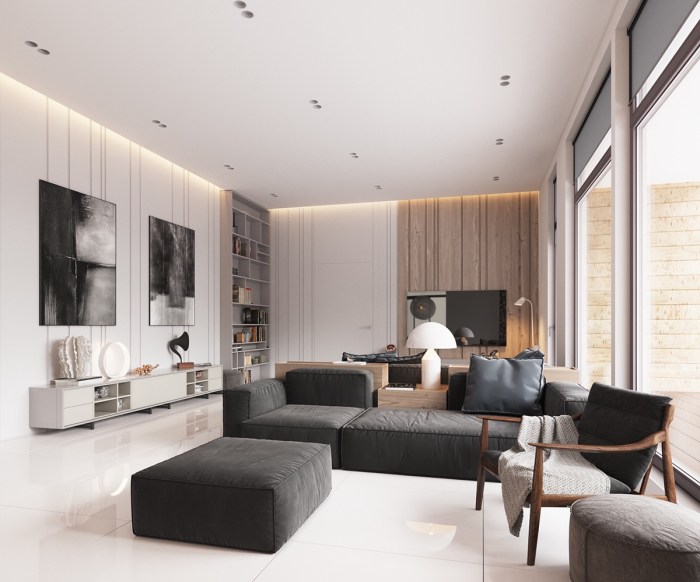
Creating a minimalist home doesn’t necessitate exorbitant spending; in fact, a mindful approach often leads to significant cost savings. Sustainability is intrinsically linked to minimalism, as reducing consumption inherently minimizes environmental impact. By strategically planning and prioritizing, you can achieve both an aesthetically pleasing and environmentally responsible living space within your budget.
Budget-Friendly Minimalist Design Strategies
Adopting a minimalist aesthetic doesn’t require emptying your bank account. Careful planning and resourcefulness are key. Prioritizing essential, high-quality items over numerous inexpensive, low-quality goods leads to long-term savings. For instance, investing in a durable, well-designed sofa will likely outlast several cheaper alternatives, reducing replacement costs over time. Similarly, choosing versatile furniture pieces that serve multiple functions maximizes space and minimizes the need for additional purchases.
A well-planned budget, allocating funds strategically across essential elements like flooring, paint, and key furniture pieces, ensures efficient resource allocation. This approach prevents impulsive buys and maintains focus on creating a functional and stylish space within your financial constraints.
Sustainable Materials and Eco-Friendly Practices
The environmental impact of our homes is considerable. Choosing sustainable materials significantly reduces this impact. Bamboo, a rapidly renewable resource, offers a strong and aesthetically pleasing alternative to hardwoods. Reclaimed wood, sourced from demolished buildings or salvaged lumber, adds character and reduces deforestation. Natural paints and finishes, devoid of volatile organic compounds (VOCs), improve indoor air quality and minimize health risks.
Practices such as proper waste management during construction and renovation, recycling materials whenever possible, and opting for energy-efficient appliances contribute to a more sustainable home. Consider the embodied carbon of materials—the total greenhouse gas emissions associated with a product’s entire lifecycle—when making material choices. For example, locally sourced materials often have a lower embodied carbon footprint than those transported long distances.
Sourcing Second-Hand and Repurposed Items
Embracing second-hand and repurposed items is a cornerstone of sustainable and budget-friendly minimalist design. Thrift stores, antique shops, and online marketplaces offer a wealth of unique and affordable furniture, décor, and accessories. Repurposing existing items—transforming old jars into storage containers or an old ladder into a bookshelf—adds character and reduces waste. This creative approach not only saves money but also reduces the demand for newly manufactured goods, contributing to a circular economy.
For example, a vintage dresser, refinished with a fresh coat of paint, can become a stylish and functional centerpiece for a bedroom, offering both aesthetic appeal and a significantly lower cost compared to a new piece.
Reducing Waste and Promoting a Minimalist Lifestyle
Minimalism extends beyond aesthetics; it’s a lifestyle choice that emphasizes intentionality and reduces waste. Before purchasing any item, ask yourself if it truly serves a purpose and aligns with your needs and values. Avoid impulsive buys and prioritize quality over quantity. Regularly decluttering your space helps to maintain a sense of order and prevents the accumulation of unnecessary items.
Composting food scraps and recycling materials reduces landfill waste. Choosing products with minimal packaging and supporting businesses committed to sustainable practices further minimizes environmental impact. For example, purchasing items in bulk, using reusable shopping bags, and choosing products with minimal packaging directly reduce waste generation. These conscious choices contribute to a more sustainable and fulfilling minimalist lifestyle.
Illustrative Examples
Minimalist design, while seemingly simple, requires careful consideration of space, functionality, and aesthetic harmony. The following examples demonstrate how minimalist principles can be applied to create serene and efficient living spaces, showcasing the interplay of form, function, and personal expression. Each example avoids clutter while prioritizing comfort and intentionality.
Minimalist Living Room Design
This living room embodies minimalist principles through its restrained palette and thoughtful furniture selection. The walls are painted a soft, warm grey – a neutral that enhances natural light and provides a calming backdrop. The flooring is wide-plank, light oak, its natural grain adding subtle texture without overwhelming the space. A single, substantial sofa in a deep charcoal grey fabric anchors the room.
Its clean lines and simple form contrast beautifully with a low, rectangular coffee table made of polished concrete, its cool, smooth surface reflecting light. A single, oversized floor lamp with a linen shade provides soft, diffused illumination, while strategically placed recessed lighting offers task lighting as needed. A few carefully chosen accessories – a sculptural ceramic vase, a stack of art books, and a soft, textured throw blanket in a muted shade of blue – add personality without disrupting the overall sense of calm.
The textures are carefully considered: the smooth concrete, the soft linen, the rough-hewn oak, creating a subtle interplay that engages the senses.
Minimalist Bedroom Design
The minimalist bedroom prioritizes restful sleep and efficient storage. The walls are painted in a calming shade of pale blue, reminiscent of a clear sky, enhancing the sense of tranquility. The flooring is a plush, neutral-toned carpet, offering warmth and comfort underfoot. The bed is a simple platform bed, low to the ground, with crisp white linen sheets and a minimal duvet.
Beside the bed, a sleek nightstand made of light oak houses a small lamp and a few personal items. Storage is seamlessly integrated; built-in wardrobes with sliding doors conceal clothing and accessories, maintaining a clean, uncluttered aesthetic. The absence of superfluous furniture and accessories allows the focus to remain on rest and relaxation. A single piece of art – a minimalist print – hangs above the bed, adding a touch of personality without overwhelming the space.
The overall effect is one of serene simplicity, conducive to restful sleep.
Minimalist Kitchen Design
This minimalist kitchen exemplifies functionality and aesthetic harmony. The cabinetry is sleek and handleless, crafted from matte white lacquer, creating a clean, uncluttered appearance. The countertops are made of a durable, light-grey quartz, offering both practicality and visual appeal. Appliances are integrated seamlessly into the cabinetry, maintaining a cohesive and uncluttered look. Open shelving displays a carefully curated selection of everyday dishes and utensils, adding a touch of personality without detracting from the overall minimalist aesthetic.
A single pendant light hangs above the island, providing focused task lighting. The backsplash is a simple, yet striking, subway tile in a neutral off-white, offering a subtle textural contrast against the smooth surfaces of the cabinetry and countertops. The overall impression is one of understated elegance and efficient functionality, a space designed for both culinary creativity and effortless clean-up.
Designing a minimalist home is not merely about decluttering; it’s about cultivating a mindful approach to living. By carefully considering space planning, material selection, and the integration of personal touches, you can create a sanctuary that reflects your values and enhances your well-being. The journey, as we’ve explored, involves understanding the principles of visual balance, the psychological impact of color, and the importance of sustainable practices.
The result? A home that is not only aesthetically pleasing but also a testament to intentional living, a space where functionality and serenity coexist in perfect harmony. The scientific underpinnings of this approach ensure that your minimalist haven is not just beautiful, but also conducive to a healthier and more balanced lifestyle.
Query Resolution
What are some common minimalist design mistakes to avoid?
Over-minimalism (creating a sterile environment), neglecting texture and visual interest, and failing to incorporate adequate storage are common pitfalls.
How can I make a small space feel more minimalist?
Maximize vertical space with shelving, utilize multi-functional furniture, and stick to a light and airy color palette to create an illusion of spaciousness.
How do I balance minimalism with personal expression?
Curate a few meaningful items that reflect your personality and interests. Quality over quantity is key. Focus on pieces with clean lines and neutral colors that won’t overwhelm the space.
Is minimalist design expensive?
Not necessarily. Prioritizing quality over quantity and sourcing second-hand or repurposed items can make minimalist design budget-friendly. Careful planning and strategic purchases are key.
How can I maintain a minimalist home long-term?
Regular decluttering, mindful purchasing habits, and a commitment to intentional living are essential for long-term minimalist success. Develop systems for storage and organization to prevent clutter buildup.
Read More: Kanavino.org
